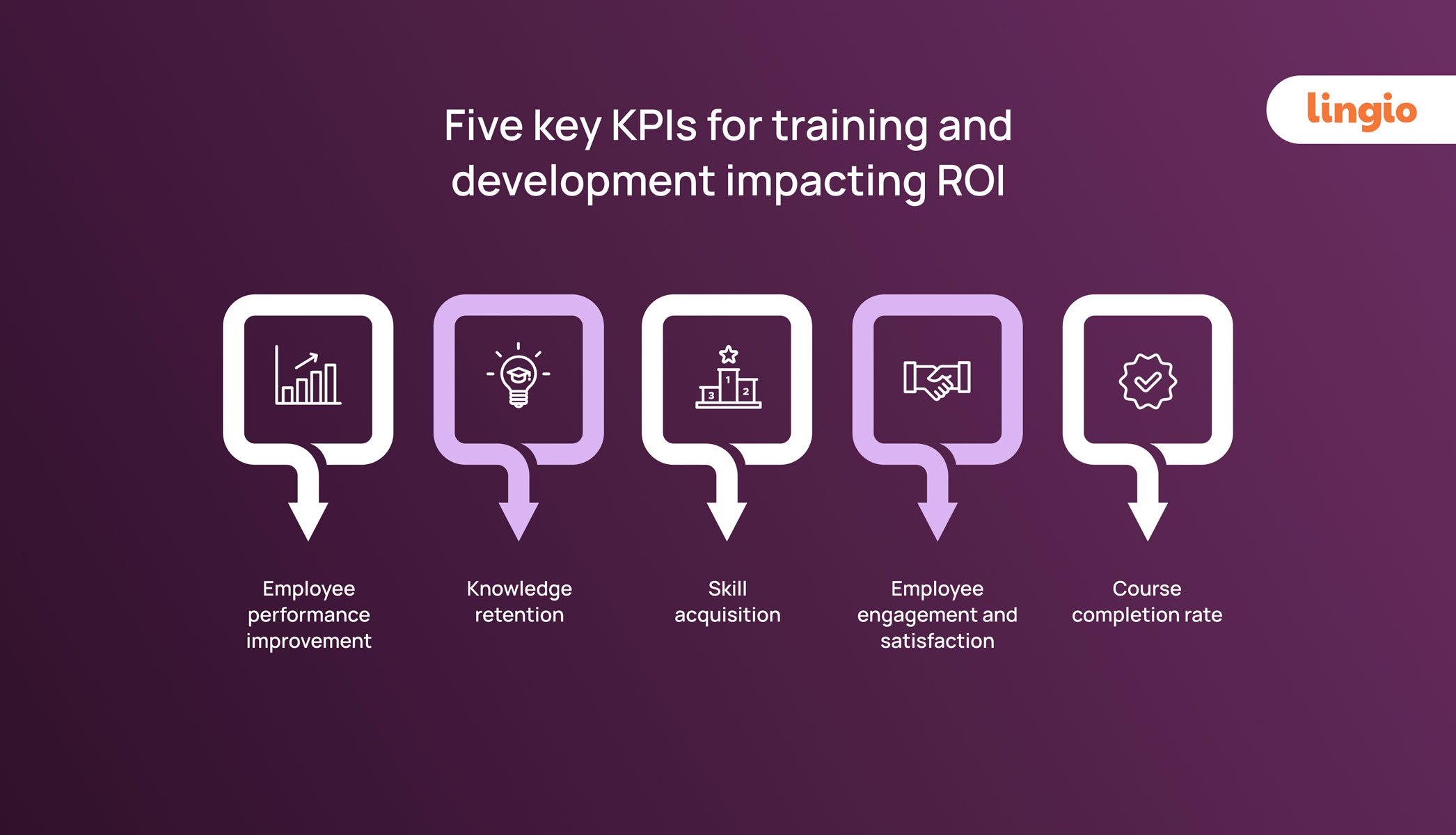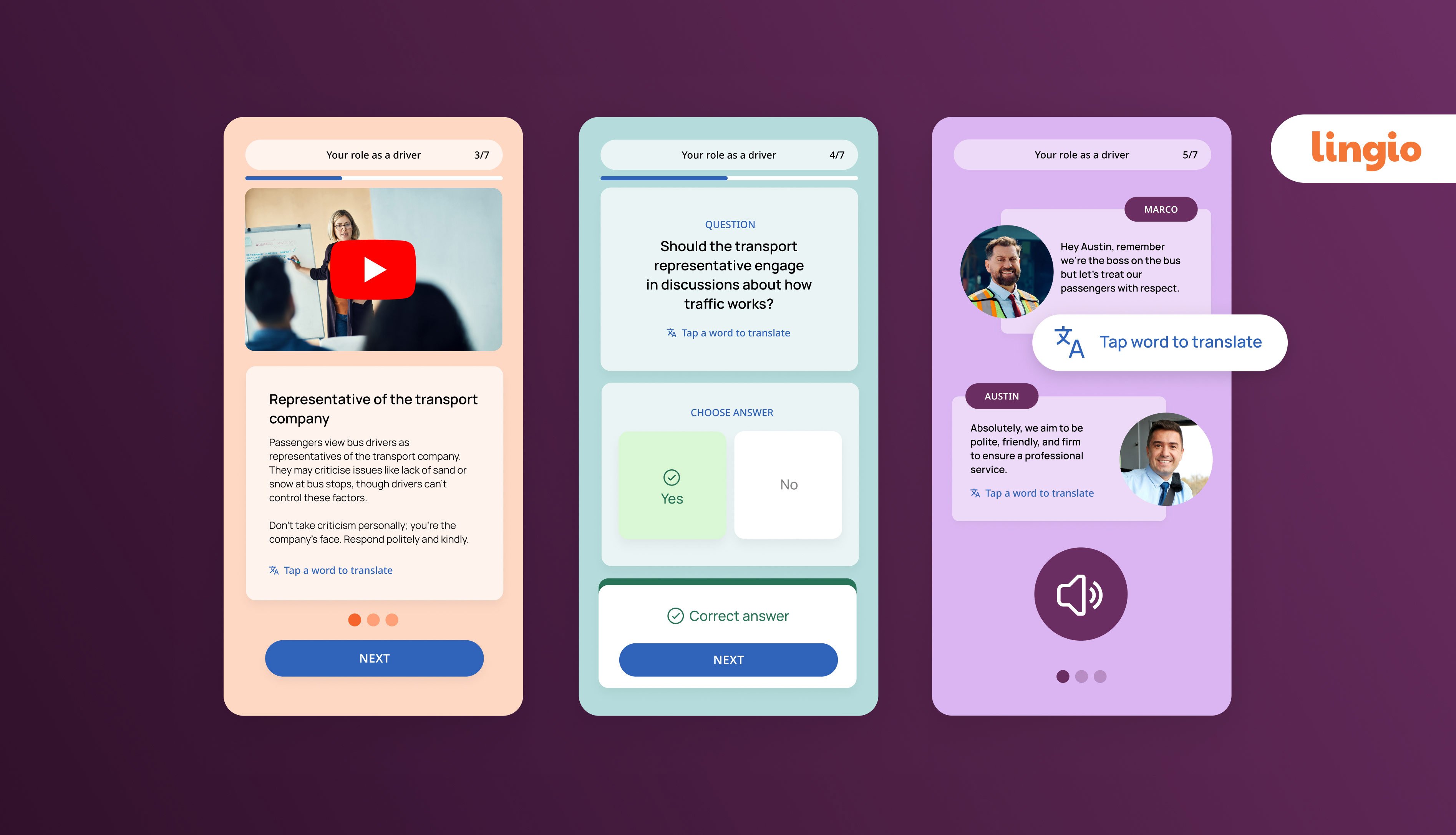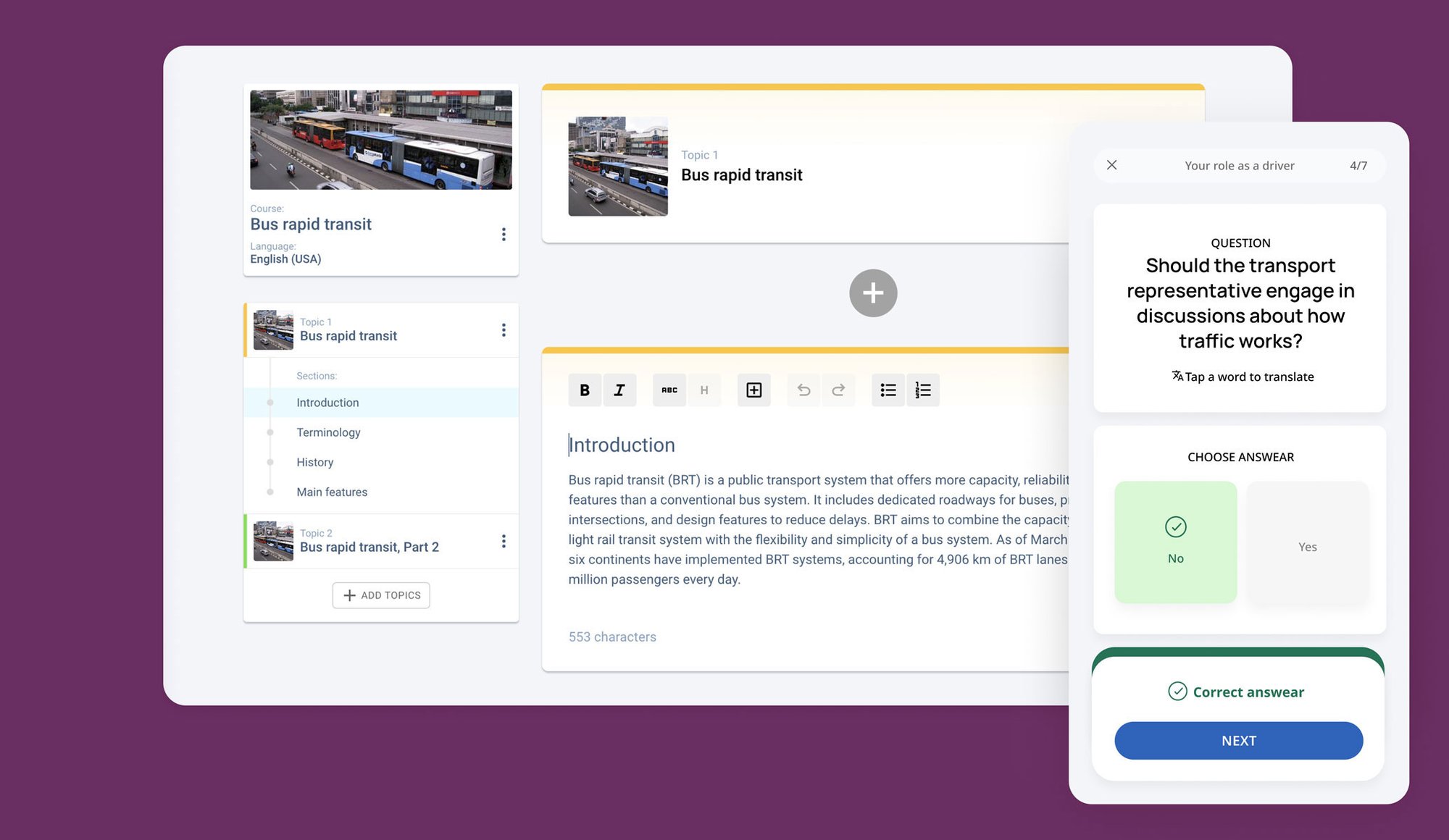Key metrics related to training ROI
Before diving into the arithmetic of calculating training ROI as a definitive number, it's essential to understand the landscape it inhabits through related key performance indicators (KPIs). These KPIs act as individual brushstrokes in a larger portrait, detailing the nuances of training effectiveness and its alignment with organisational goals.
Let's now explore five key KPIs that provide a foundational framework on how to calculate ROI in training and development, setting the stage for more detailed analysis.

1. Employee performance improvement
This KPI measures the extent to which employee productivity, efficiency, or output improves as a direct result of training programs. The direct impact of enhanced employee performance on organisational success makes this KPI a crucial indicator of training effectiveness. Higher performance levels can lead to increased revenue and cost savings, contributing positively to the ROI of employee training.
How it can be calculated: Performance improvement of training participants can be quantified through metrics such as increased sales volume, reduced task completion time, or enhanced quality of work.
2. Knowledge retention
Knowledge retention evaluates the longevity and applicability of the knowledge acquired from training sessions. Sustained knowledge retention ensures that the training has a lasting impact, allowing for the continued application of skills that support organisational goals. It's a testament to the training's efficacy and its ability to generate long-term value.
How it can be calculated: This KPI is typically measured through post-training assessments, quizzes, or practical demonstrations conducted at various intervals after the training has concluded. For example, measuring this KPI for a sales training program could involve evaluating sales team members' ability to recall and utilise sales tactics and strategies in their pitches and interactions, directly influencing sales outcomes.
3. Skill acquisition
Skill acquisition tracks the new abilities and competencies employees gain as a direct outcome of participating in training programs. New skills can fill organisational gaps, drive innovation, and enhance competitiveness. The ability to acquire and apply new skills directly translates into business growth, marking this KPI as a significant contributor to training ROI.
How it can be calculated: Evaluation of skill acquisition is often done through performance assessments, task observation, or employee self-reports on the application of new skills.
4. Employee engagement and satisfaction
This KPI assesses employee engagement and satisfaction levels following training interventions, reflecting on the training's relevance and impact on morale. Engaged employees are more productive, loyal, and likely to contribute to a positive workplace culture. Improvements in this area can reduce recruitment costs and increase productivity, directly affecting the ROI of training programs.
How it can be calculated: Surveys, interviews, and turnover rates are common methods for measuring employee engagement and satisfaction changes.
5. Course completion rate
The completion rate of a training course indicates its engagement level and perceived value by employees. High completion rates, especially those achieved through employee training software like Lingio, underscore the effectiveness and appeal of training content. Lingio's mobile-based learning platform, enhanced by gamification and AI, achieves up to 12x higher course completion rates, ensuring a broader impact across the workforce and significantly boosting training investments.
How it can be calculated: This KPI is quantified by dividing the number of participants who completed the course by the total number of enrollees.
The significance of delving into these metrics is their capacity to offer a rounded view of how training influences financial outcomes and organisational dynamics. As we discuss the formula to calculate training ROI, this comprehensive perspective will guide our approach, ensuring training delivers financial returns and strategically advances the organisation.









